Bringing a new puppy home can be one of the most exciting and nerve-racking things in life. The possibility of a future with a loyal and loving companion that will be your best friend for years to come is what most pet parents seek.
But when you are in the trenches of taking care of a puppy that screams and cries you may wonder if you will ever get to that point.
Puppies scream and cry when they are trying to get your attention or communicate something to you such as hunger, excitement, pain, separation anxiety or they want to play. Their screaming may also indicate something is wrong. Their crying may be reinforced by your constant attention.

If your puppy is screaming and crying a lot it’s because he is trying to communicate something to you, you need to approach it the correct way or it can become a learned and reinforced behavior.
Here is a Quick Solution Guide to Solve Your Puppies Problematic Whining (Find more details below)
Reasons for Whining | Quick Solutions |
|---|---|
Stress | Find and reduce Stressors |
Excitement | Remain Calm, Praise for quiet behavior |
Attention | Ignore unwanted attempts for attention |
Separation Anxiety | |
Fear | |
Boredom | |
Pain |
(Affiliate links above)
Why is My Puppy Screaming & Crying and What to Do About It
You love your Puppy, and there’s nothing more heartbreaking than listening to its forlorn cries get louder and louder. When those cries become so loud that it seems your puppy is screaming it can be scary and frustrating not knowing what your dog is trying to communicate to you and how to correctly handle your dog’s screaming to get it to stop and help them be happy and healthy.
Here are the most common reasons your puppy might be screaming & whining.
Your Puppy Has Separation Anxiety
From the moment they are born puppies are with their mothers and siblings. They have constant companionship from the pack. The warmth and comfort of their mother’s and sibling’s bodies help them to know that they are safe and protected.
When a puppy leaves its pack and is sent to a new home where he’s the only one of his kind it can be traumatic and scary. Trying to crate train a new puppy or even leaving the puppy alone for a while can cause the puppy to panic which may induce howling, screaming, or crying.
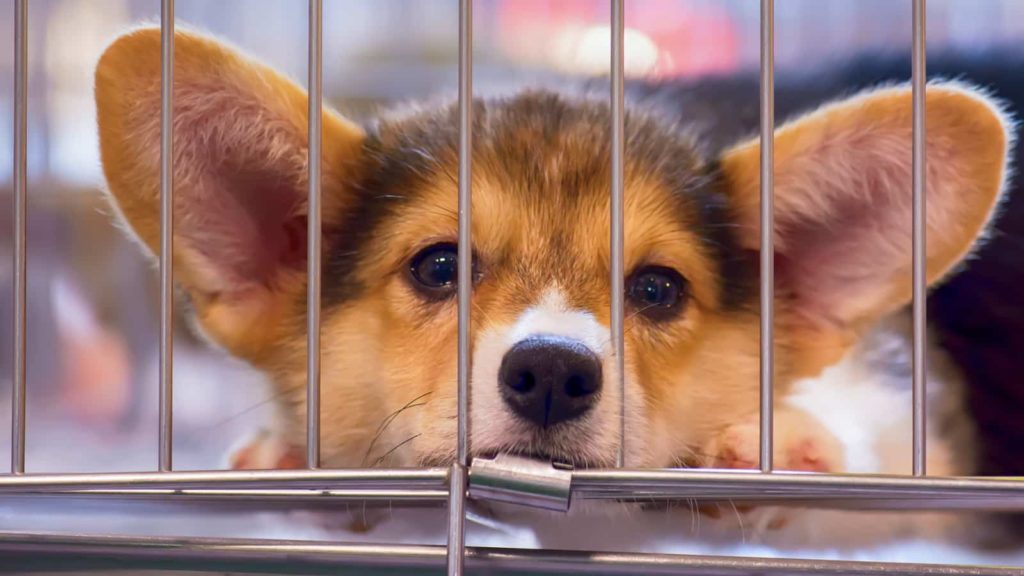
How to Tell:
Constantly jumps and whines for you to touch them pet them or cuddle them. Cries, screams or howls when you leave them alone destroys things when you are gone, is overly excited when you return. Is easily startled or unsure of and scared of anything new.
Ask Yourself:
How has the transition been for your puppy? Did the breeder you get your puppy from work towards weaning your puppy from being in the presence of its mother and siblings at all.
Disclaimer: This post may contain affiliate links. We only recommend high-quality products that are used and recommended by real owners. If you use these links to buy something we earn a small commission.
What kind of comforts are you offering to your puppy currently.
What to do:
Providing extra comfort and security for your new puppy while training them to be confident and independent can be a tricky balance to achieve.
Sense of smell is a powerful thing for dogs. Their sense of smell is 40 times better than ours and much more refined. We can use this power to our advantage in two ways.
Before it’s even time for your puppy to come home take a blanket or sweatshirt that smells like you and give it to your puppy’s breeder to put in your puppy’s bed, so they can get used to your smell and create positive associations.
The second way this will benefit your new puppy is it will allow the scent of his mother and littermates to get on the item so when you bring him home it will smell like them and help make the transition easier for him.
Pro Tip: Another great tool to help your little puppy miss his family less is to get a stuffy like this one from Amazon (affiliate link) that mimics the heartbeat of his mama. Having a comfort item like this can be extremely useful and can make a huge difference those first few weeks you have your new puppy.
It’s a new environment and it’s going to take time for him to get used to it. Make sure that he has a small area (Crate or Playpen) to stay in, this will help him feel more safe and secure.
Your puppy’s natural instinct is to find a den that will help him feel safe. At night you can keep his crate near you so you are able to comfort him, it might make a few sleepless nights for you, but will go a long way in reassuring your puppy that he’s not alone.
Is your puppy going through a sleep regression? Read this article to find out more about puppy sleep regressions.
Puppy Sleep Regression (Month by Month Guide)
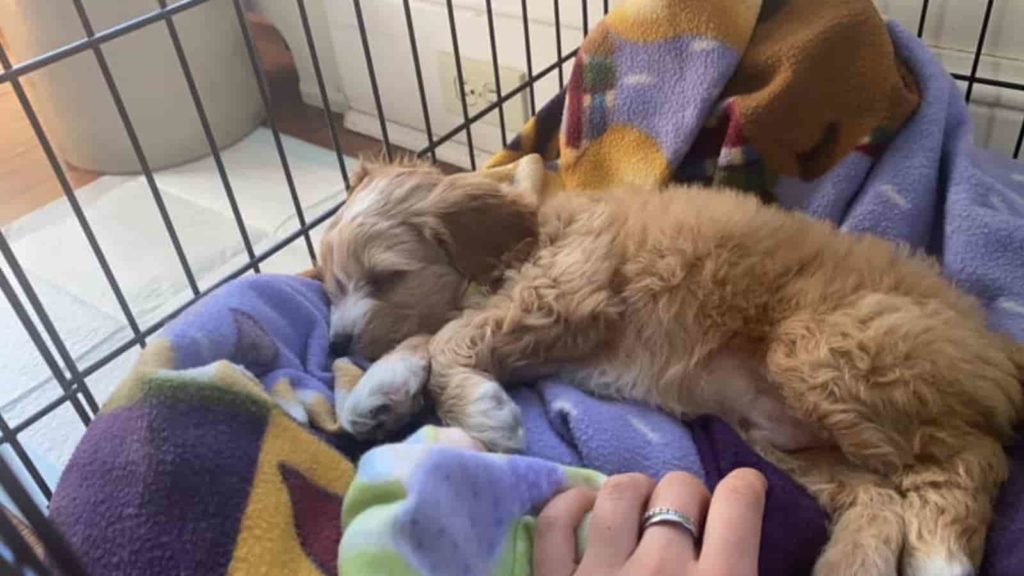
It may be tempting to let your puppy sleep with you, but be sure that’s what you want before you go down that path. The following article may help you decide.
Letting Puppy Sleep with you? (How to Do It Safely) – Paws and Learn
When using the crate at night don’t take your puppy out just because he is whining, that will only reinforce the behavior. You can take him out for bathroom breaks, but when his bathroom break is over put him back in. If you get him out for a cuddle or let him sleep in bed with you, crate training is going to be a lot more difficult.
Most puppy owners said that they would let their puppy cry or scream for 10-15 min. and if they didn’t stop after that they would take them out to get a drink or use the bathroom, but then promptly put them back in.
Your puppy Wants Attention
Raising and caring for a puppy is no easy task. Caring for a young puppy can be challenging since they can build such strong attachments to their owners and because they are so smart they know how to tug at your heartstrings with their adorable little whimpers.
When the whimpers don’t work they may even resort to loud worrisome screams.
It can be difficult and sometimes impossible to tell the difference between screaming because of separation anxiety and crying because they just want attention.
How to tell:
This is more of a learned behavior. If your puppy whines and cries repeatedly when in the same situation it could be that they have come to understand it works to get what they want.
If you have held and cuddled your puppy a lot they could come to expect to always be in your arms or lap. If your puppy starts to cry or whine as soon as you put it down that could be a learned behavior for getting attention.
Ask yourself:
What is he trying to get your attention for?
Is it worth giving the attention or not?
Is your puppy is whining to get food?
Your puppy may be learning to tell you they need to go to their potty spot to use the bathroom.
What to do:
Working towards training correct behaviors and how to recognize unwanted or learned behaviors is your first step in helping you understand how your puppy communicates with you.
Trying out a fun training program together like this widely popular program Brain Training for Dogs can help unlock your dog’s hidden potential and help them learn how to avoid problem behaviors.
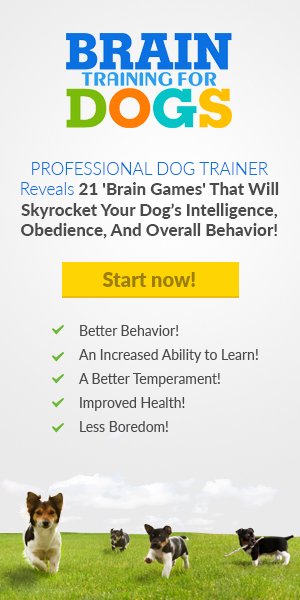
Remember you only want to reinforce behaviors you would like to see repeated. If she’s whining because she needs to go outside to go to the bathroom, then yes you should respond.
If she’s whining to get you to share your dinner then don’t reinforce that behavior.
Even telling your dog “it’s ok”, or to “calm down” in a loving voice is giving them the attention they are wanting. To truly get this behavior under control you need to completely ignore them.
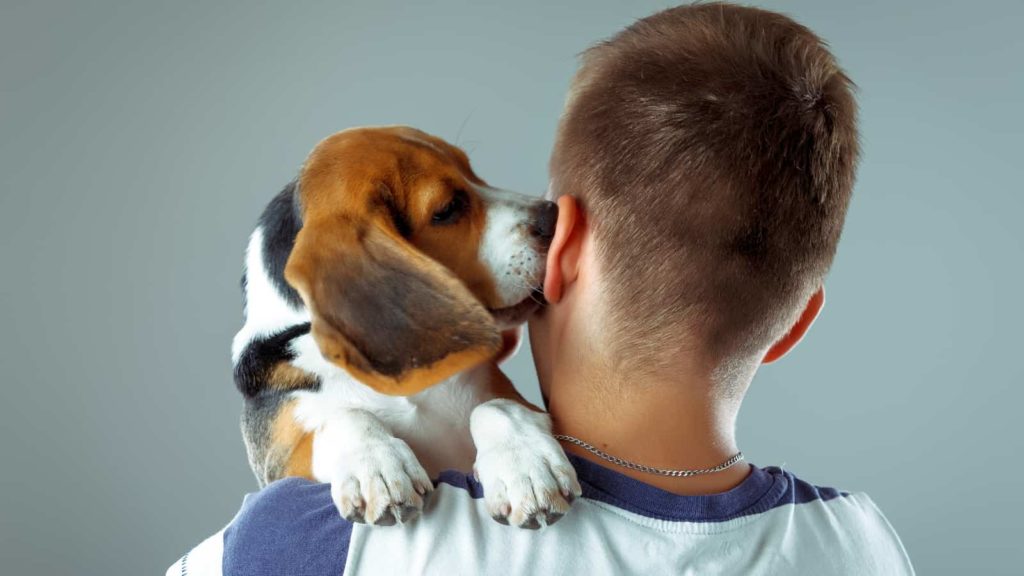
Your Puppy is Stressed
Learning to read your dog’s body language will be a very important step in understanding their crying. Knowing what they are trying to communicate to you will help you know how to proceed.
When you are looking for signs of stress look to see if your dog is doing any of these things as well. They will likely not be showing all of these signs at the same time.
How to Tell:
- Barking
- Growling
- Licking lips
- Yawning
- Raised hackles
- Pacing
- Whale eyes (when they show the whites of their eyes)
- Freezing or very stiff and tense body. Be very careful if this is the case, it’s most likely that your dog has gotten to the point he is so stressed his next move will be to bite.
Ask yourself:
Is your Puppy overwhelmed, or in a new situation?
Is he not understanding you or something you are trying to teach or communicate?
Did this come on suddenly, when someone or something came close?
Can you figure out a way to remove the stimuli that are causing him stress in order to help him calm down?
What to do:
Puppies are very impressionable. They are usually very curious as well which is why taking advantage of socializing a puppy at this stage in their life is very important. Socializing needs to be done carefully however, a puppy can still get stressed and overwhelmed when too many things are happening at once.
Try and change the environment.
Be calm and reassuring.
Avoid too much stimulus.
Make sure that you are clear with training and giving commands.
Don’t use harsh punishment.
Try to figure out the trigger and avoid it, or work on training to tolerate it better.
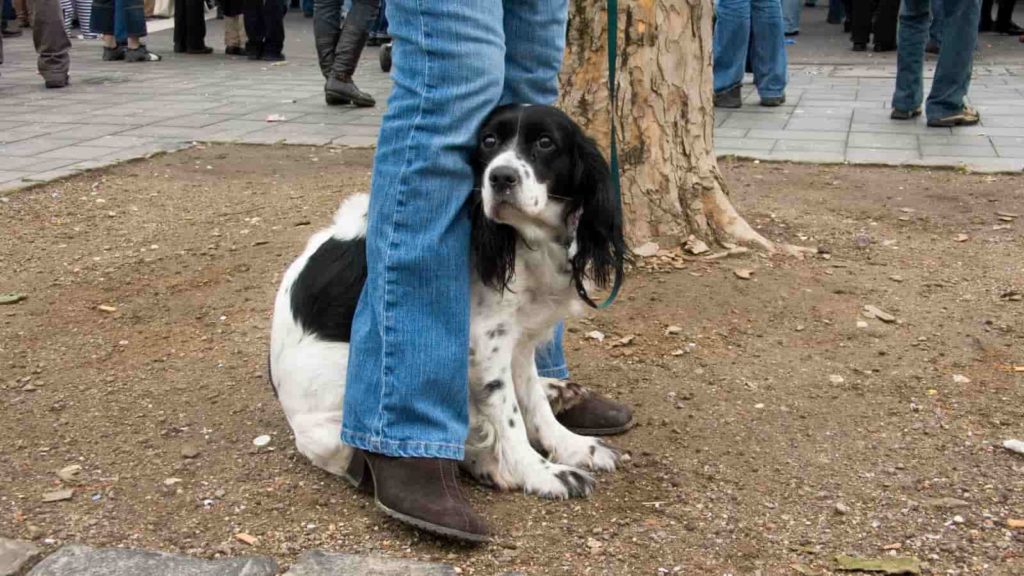
Your Puppy is Fearful
Puppies are very impressionable and teaching them and socializing them starts in the very beginning stages of their life. Because of this, it’s important to only support reputable breeders who take good care of their puppies.
Unfortunately, there are many people that run puppy mills (link to information on how to stop puppy mills) that are breeding puppies purely for the money and do not take very good care of them when they are young.
When a puppy starts their life in this type of environment it can be very damaging and set them up for a lifetime of fear or aggression. Thankfully there are things that you can do to help if you do end up with a puppy that has been treated this way, it will just be more difficult to get them feeling and behaving confidently.
If you have had your puppy for a while and the screaming and crying have just begun, it could be possible that your puppy is going through a fear period.
Pro Tip: Puppies go through a fear period around 8-12 weeks, and then another one around 6-12 months. At this time they may be extra sensitive to new stimuli, loud noises, or new environments.
How to tell:
Tucked tail, shaking, lowered ears and or head, trying to hide behind you or something else.
Ask yourself:
How was your dog treated as a puppy? Is your puppy a rescue?
Does your dog get frightened when they hear a loud unrecognizable noise?
What to do:
If your puppy seems overly fearful of many things and you suspect it is whining or crying a lot because of this, you will need to work very hard at building a solid foundation of trust between you and your puppy.
Once this foundation of trust is established it will be easier for you to teach your dog that the rest of the world is not as fearful as they suspect it may be.
DO NOT use any coercive methods of training or yell or be too firm with your puppy.
It can be helpful to work with a professional dog trainer or behaviorist who has experience working with abused or mistreated puppies. They will help you come up with and implement a trust and training plan.
If you think their fear is a one-time circumstance that has been brought on by something unexpected in his environment, like sudden fireworks or the sound of a car misfiring, then you can isolate that particular thing and work towards training them to tolerate it.
I always encourage my students (check out my classes) to play sound recordings of fireworks starting quietly in the background and working up to very loud and life-like in order to prepare their dogs for coming celebrations like New Year’s Eve or the Fourth of July.
Pro Tip: When puppies are born, their mother naturally emits pheromones that give the puppies a sense of security and comfort. These pheromones help dogs bond to each other and their mom.
Scientists have vets have been able to replicate these pheromones. You can get a kit like this one to help your puppy bond and adjust to their new home.

Your Puppy is Bored
When our dog Bear (a Maltese Chihuahua mix) gets playful he lets us know by barking and whining and begging us to play. Most puppies will let you know when they are tired of laying around not doing a whole lot.
How to tell:
Short high pitched whines, usually accompanied by a sigh, may seem lazy or disinterested in their favorite toys or games.
He could be digging in the yard, getting into things they shouldn’t like the trash, or chewing up your favorite things like shoes or furniture, or hiding and burring his food.
Ask Yourself:
Again you need to think about how much exercise and mental stimulation your puppy is getting. Even though puppies sleep a lot when they are awake they like to have someone or something to play with.
What to do:
Provide your dog with some mental stimulation. Teach them some new tricks, work on training, or give them a fun new toy like this fun crinkle toy from Amazon (affiliate link).
Try not to leave all their toys available all the time. If you keep all but 2 or 3 put away and rotate them that will keep your puppy from getting bored too easily.
You can also try this awesome program called Brain Training that can give you a huge boost in your training methods and plans.
If you are on Facebook I would suggest that you join a group like this Canine Enrichment group where you will find a plethora of great ideas from other dog owners. While you’re at it feel free to join our Dog Group and follow me on my Facebook page at Paws and Learn for fun ideas and new announcements.
You may think getting your puppy another dog as a friend is a good idea, and it very well may help take the burden of entertainment off your shoulders, but before you decide to do that you will need to do some research on littermate syndrome. Getting two puppies at the same time is generally not a good idea.

Your puppy is in Pain
Dogs and puppies generally don’t show pain as much as you think they might. It does take a lot for a dog to be screaming or howling in pain. There are videos of puppies on youtube getting their vaccinations and screaming because of pain. Part of the screaming also has to do with the fear they are experiencing.
How to tell:
Look for any kind of physical signs such as limping, constantly licking a sore area, or yelps and whines when picked up or moved.
Ask Yourself:
Has my puppy had all its vaccinations? Has his energy been waning? Are there other red flags such as growling or biting when handled a certain way or untouched food?
What to do:
If you suspect your dog is in pain take him to your vet right away. If you can’t figure out the cause of the whining and it doesn’t appear to be any of the above reasons then you will want your puppy to have a complete checkup as soon as possible!
Your Puppy is Excited
Puppies are in a stage where everything is new to them. very sensitive dogs which makes them wonderful companions because they are always extremely perceptive to your needs and ready and willing to please, but it can also mean that they pick up on every mood and emotion around them.
At times they can also be high energy that can be perceived as excitement.
How to Tell:
Tail is wagging, running in circles, jumping up and down, barking.
Displaying zoomies (a sudden release of energy when your dog seems to go wild and is running around at high speed).
Ask Yourself:
What is your energy level?
Have you just come home from work and they want to greet you?
Maybe your puppy is meeting someone new or wanting to play. If you are feeling high stress or excitement your dog will feed off your emotion and most likely be showing that behavior as well.
What to do:
You can redirect his energy by taking him for a run, playing a game of fetch with a toy.
Get him to burn some energy then reward him when he’s calm.
Make sure that you have calm energy about yourself.
Dim lights, or use some of this therapeutic aromatherapy spray from Amazon (Affiliate link) to help calm her down.

It’s Normal for Puppies to Cry
You can expect puppies will whine more than adult dogs, but puppies, in general, may whine for different reasons than adult dogs. If you just brought a puppy home and he’s whining a lot, it’s most likely because he misses his mother and littermates.
Puppies should not be brought home before they are at least 8 weeks old it’s even better if they are 10 to 12 weeks. The younger the puppy the more you can expect to deal with crying.
If you are trying to crate train a puppy and he whines a lot when he is in his crate it is most likely because he is lonely and scared. A crate all by himself is a scary dark place and if it’s new to him you can expect he’s going to have a hard time at first. When you first bring your puppy home learning how to properly crate train is important, don’t give in to your dog’s cries if he’s just wanting attention.
Whatever the reason for your puppy whining the best thing you can do is make sure that your dog knows you are in charge! That doesn’t mean yell at your puppy or be mean, but be firm and consistent in the ways that you respond, let them know that you expect them to be well behaved and they will.
If you continue to have problems with your puppy crying please seek help from a professional dog behaviorist or a Vet.
Pro Tip: If you are not able to get a hold of a vet near you, or you want to avoid an unnecessary ER trip, there are online resources that you can turn to. Here is our best recommendation:
Pawp: a 24/7 digital clinic for pets that connects you to an experienced vet
Why we love it:
🐾 Answers 24/7! 🐾 No waiting! 🐾 Get Answers Online with Local Vets! 🐾 Quick Response Time! 🐾 Easy Sign UP!
Try Pawp 7 Days For Free
While we strive to give the most accurate and helpful information about your pet’s health that we can, this article is meant to be informational only and not medical advice. Never disregard, avoid or delay in obtaining medical advice from your veterinarian or other qualified veterinary health care provider regardless of what you have read on this site or elsewhere.



